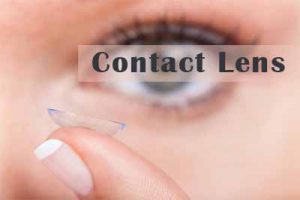- Home
- Editorial
- News
- Practice Guidelines
- Anesthesiology Guidelines
- Cancer Guidelines
- Cardiac Sciences Guidelines
- Critical Care Guidelines
- Dentistry Guidelines
- Dermatology Guidelines
- Diabetes and Endo Guidelines
- Diagnostics Guidelines
- ENT Guidelines
- Featured Practice Guidelines
- Gastroenterology Guidelines
- Geriatrics Guidelines
- Medicine Guidelines
- Nephrology Guidelines
- Neurosciences Guidelines
- Obs and Gynae Guidelines
- Ophthalmology Guidelines
- Orthopaedics Guidelines
- Paediatrics Guidelines
- Psychiatry Guidelines
- Pulmonology Guidelines
- Radiology Guidelines
- Surgery Guidelines
- Urology Guidelines
Contact lenses may soon monitor glucose levels

New York : Diabetes patients may soon be able to monitor their blood sugar with contact lenses spelling an end to painful jabs thanks to scientists who have developed a transparent sensor.
The sensor developed by the researchers from Oregon State University (OSU) in the US, uses a nanostructured transistor that can detect subtle glucose changes in physiological buffer solutions, such as the tear fluid in eyes.
Researchers in the OSU said the nanostructured transistor is specifically an amorphous indium gallium oxide field effect transistor (IGZO FET).
The sensors they fabricated using the IGZO FET will be able to transmit real-time glucose information to a wearable pump that delivers the hormones needed to regulate blood sugar: insulin and glucagon.
The sensor and pump would, in effect, act as an artificial pancreas.
Type 1 diabetes, formerly known as juvenile diabetes, can lead to serious health complications like retinopathy, blindness, neuropathy, kidney and cardiac disease, if the glucose level is not carefully controlled.
"We have fully transparent sensors that are working," said Greg Herman, professor at OSU.
"We can integrate an array of sensors into the lens and also test for other things: stress hormones, uric acid, pressure sensing for glaucoma, and things like that," he said.
"We can monitor many compounds in tears and since the sensor is transparent, it doesn't obstruct vision," said Herman.
The FET's closely packed, hexagonal, nano structured network resulted from complimentary patterning techniques that have the potential for low-cost fabrication.
Those techniques include colloidal nano lithography and electrohydrodynamic printing, or e-jet, which is somewhat like an inkjet printer that creates much finer drop sizes and works with biological materials instead of ink.
This research builds on earlier work by Herman and other OSU engineers that developed a glucose sensor that could be wrapped around a catheter, such as one used to administer insulin from a pump.
"A lot of type 1 diabetics do not wear a pump. Many are still managing with blood droplets on glucose strips, then using self-injection," he said.
"Even with the contact lens, someone could still manage their diabetes with self-injection. The sensor could communicate with your phone to warn you if your glucose was high or low," he said.
The transparent FET sensors, might ultimately be used for cancer detection, by sensing characteristic bio markers of cancer risk, he said.
Their high sensitivity could also measure things such as pulse rate, oxygen levels, and other aspects of health monitoring that require precise control.
The study appears in the journal Nanoscale.

Disclaimer: This site is primarily intended for healthcare professionals. Any content/information on this website does not replace the advice of medical and/or health professionals and should not be construed as medical/diagnostic advice/endorsement or prescription. Use of this site is subject to our terms of use, privacy policy, advertisement policy. © 2020 Minerva Medical Treatment Pvt Ltd